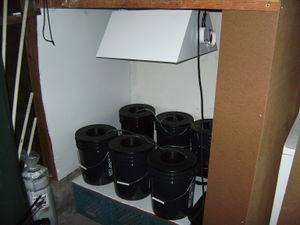Rattrap
Member
I've tried the bubble cloning thing with wildly random success, its actually how i would prefer to clone for the buckets but the results for me were so hit & miss that i've stuck with rockwool for now. I hadn't actually thought of rooting in loose coco, i guess it should work ok & as u said most of the medium should wash off easy. Might be worth a trial.













